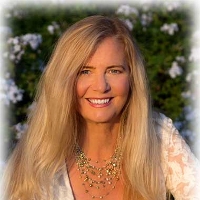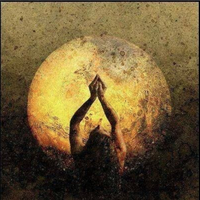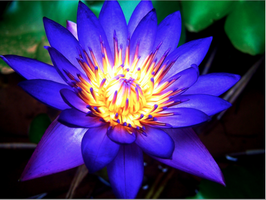
Building a Collaborative Culture
Intrinsic to the human spirit, permaculture has proven to foster superior health and longevity. It is a holistic design science that combines ancient earth wisdom, harmonious land use, and an integrative lifestyle approach.Permaculture thrives on the inclusion and collaboration of community where residents share a natural affinity for their local terrain and a passion for how food is grown locally, prepared, and celebrated. It’s about efficiently using local resources and taking nothing for granted.
As our reader, we hope you’ll take inspiration from Sedona’s garden-communities that are cultivating a spirit of conscious collaboration, resulting in flourishing ecosystems for generations to come.
The Sedona Greenhouse Project
Shams Teh, permaculture expert, wildcrafter and Founder of the Sedona Greenhouse Project is an activist who has galvanized the spirit of community through the production over a dozen sustainable, community gardens in greater Sedona. The group’s masterplan includes the creation of an extensive local food system, nursery, and garden center with training on how folks can grow their own food. As the project evolves it will include a restaurant and herbal apothecary from plants native to Sedona, bringing solutions together to meet the daily needs of our citizens.
Shams explains, “Commercial foods from grocery stores are generally mass produced, tainted with chemicals and often devoid of vital nutrition. We experience a disconnect from the food we consume because we’ve had no part in growing or producing it. The essential nutrient of love that is generated from local gardening is lost. By re-familiarizing ourselves with the rhythms of nature and plants that are indigenous to our region, we can come together, put our hands in the soil and grow our food with renewed passion.”
Sourcing edibles from our native food forests is also a vital component of permaculture. The roots of plants and trees speak to one another through an underground network. They attract bugs and mycelium that ward off encroaching plant predators so that life may flourish. Geoff Lawton, world-renowned permaculture expert explains that with a bit of education, we can work with nature to rebuild self-sustaining and self-replicating local food forests, assuring sustainability for present and future generations.
Shams concludes, “The Sedona Greenhouse Project and other garden ventures are replacing the old model of ‘resentful labor’ with the joy of communal, sacred labor. As we think, buy, and demand foods and commodities generated locally, the power returns to the people—and the love of community not only builds sustainability, but longevity.” https://www.sedonagreenhouse.org
How Sustainable Gardening Was “Seeded” in Sedona
Gardens for Humanity in Sedona was pioneered in 1996 by Adele Seronde, author of the book, “The Sacred Garden.” She brought together local artists, gardeners, and environmentalists to teach gardening with emphasis on working with our future pioneers—our children. Since then, they’ve worked with students in schools, libraries, and other outlets to produce flourishing gardens.
Richard Sidy became Gardens for Humanity President in 2010 and has forged strong partnerships with Sedona’s Sustainability Alliance, the Verde Valley Food Policy Council and numerous education outlets. Richard explains, “It’s our responsibility to provide children with tools that empower and inspire them to be optimistic about the future. Gardening and artistry can do just that. Children don’t become environmentalists through fear, they do so by love. Love, embodied in nature, is the transforming agent. When children love something, they will want to protect it because they feel they belong to it.”
Gardens for Humanity is dedicated to regaining balance with the natural world, fostering artistic expression, tending to the gardens of the human spirit, and creating a more sustainable, humane culture. “Gardening is practical spirituality,” says Richard. https://gardensforhumanity.org
Verde Valley Seed Library
The Verde Valley Seed Library, founded in 2015, has developed a bank of locally grown seeds. Gardeners borrow seeds, grow them, collect new seed yields, and return them to the library. The library has become a focal point for gardeners to come together, share resources and exchange indigenous, heirloom seeds. Seeds of seed savers from all over the greater community are labeled by location and the date it was yielded.
Richard explains, “Generation after generation, indigenous tribes have called seeds “their ancestors,” as seeds are honored in sacred traditions as offspring. Just like humans, seeds behave differently according to their environment and the consciousness within the seed’s DNA. Hybrid and GMO seeds present a risk as they live only one generation. Heirloom seeds are evolving, alive, and have greater levels of adaptability to their environment. Plants thrive and better adapt in an area where the seeds were derived. https://www.facebook.com/verdevalleyseedlibrary/
Sustainable Wall Gardens
For those who don’t have a plot of dirt to grow plants and vegetables, Cultiv8 Sedona specializes in the design and installation of gorgeous, living edible and decorative plant walls. Indoors or outdoors, they can be custom-built to fit the need.
Indoor, environments benefit from the oxygen and negative ions vertical gardens provide, cleaning the air and absorbing CO2. Usually fed by an automated irrigation system with built-in moisture sensors, vertical gardens and living walls allow for minimal maintenance and labor in the production of food that is as beautiful as it is nutritious!
The Cultiv8 team practices biophilic design (building design that incorporates nature and contributes to human health). Cultiv8’s vision is to have their products make a positive impact on community wellness by creatively covering vertical spaces everywhere with lush plant life that can be harvested regularly.
Sedona resident, Craig Ingutti is a hydroponic, aeroponic, and aquaponic system design expert and founder of Culti8Sedona. www.cultiv8sedona.com
Sedona is Forging a Strong, Sustainable Community
As tourists come and go, they will begin to observe Sedona’s ever-evolving movement toward sustainability. This movement is not just about Sedona. We invite other towns to seize the torch and cultivate collaborative, ecologically minded communities. By working together, gardeners, volunteers, and local product makers foster a spirit of belonging—achieving self-reliance and restoring power back to the people.
Christina Fior is a noted Author, Transformation Coach, Lifestyle Catalyst, and Managing Editor of Spirit of Sedona Magazine.
To learn more:






